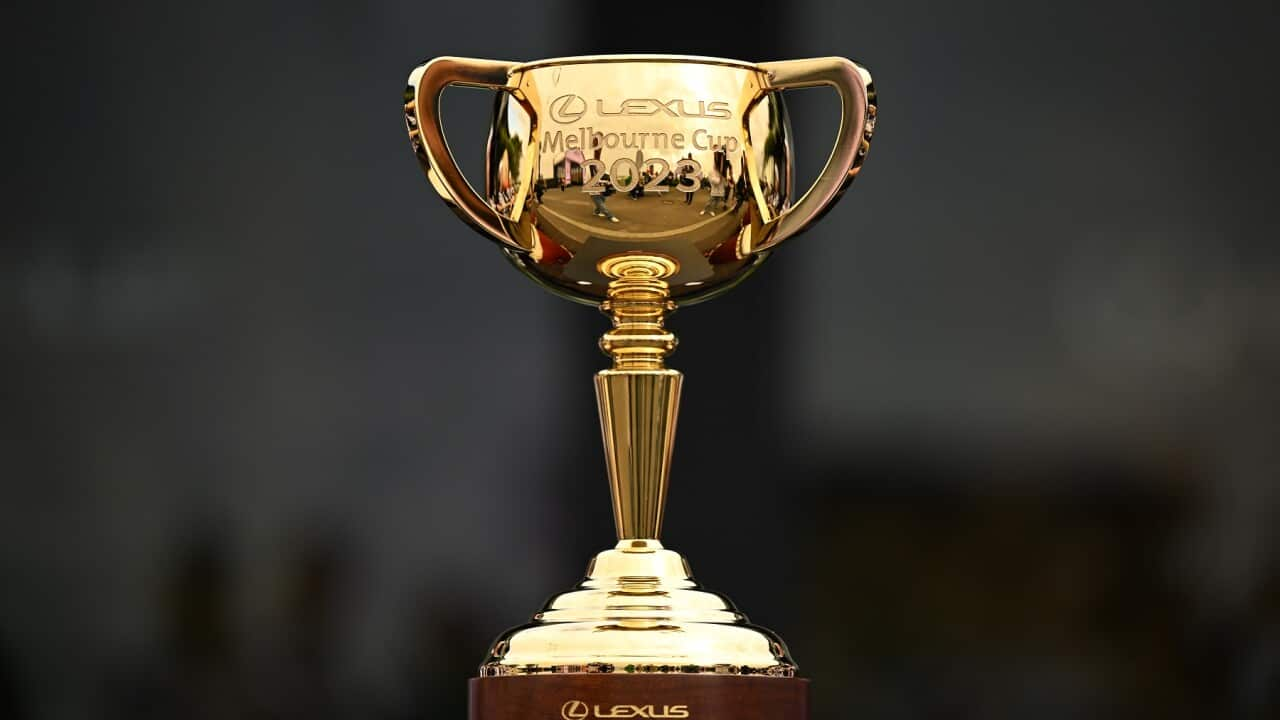TRANSCRIPT
The first Tuesday in November marks a significant moment for many Australians.
At 3pm, millions of people around the country pause to watch the Melbourne Cup.
Victorians even have a public holiday to commemorate the race.
Steve Rosich is the C-E-O of Victoria Racing Club, the organisation that runs Flemington Racecourse in Melbourne, where the race is held.
He says the event is monumental on both a national and global scale.
"It's an iconic race. It's the most famous two-mile handicap race in the world, has prize money of $8.4 million dollars. It attracts jockeys and international entrants from all around the world and it captures the hearts of our nation. And the race stops the nation, it absolutely does. More than fifty per cent of adult Australians will interact with the race in some way. It's so important to the fabric of Melbourne, our sporting culture, our event culture, and it is the largest annual economic contributor of any sporting event in Australia."
The Melbourne Cup is the world's richest handicap race.
That's a race where every horse carries a certain amount of weight, which is determined by its official rating.
The more successful horses carry more weight, with the aim of giving all horses an equal opportunity to win.
It's a practice that has attracted growing criticism from animal welfare groups.
Doctor Liz Walker is the C-E-O of R-S-P-C-A Victoria.
She says using whips on race horses is cruel.
"We are opposed to the use of whips. There is clear evidence to show that they in no way enhance performance and make horses go faster and they most definitely hurt the horse. We would say that it's high time that the Australian Racing Industry moved to eliminate whips and follow other countries around the world who have done so without impacting their industry."
In Australia, using a whip while racing and training a horse is legal.
Jockeys are allowed to whip a horse in the last 100 metres of a race at their own discretion.
They are not allowed to raise their whip above their shoulder and cannot whip a horse in consecutive strides before the 100 metre mark.
Doctor Walker also says that more transparency around reporting on the welfare of race horses could prevent fatal, race-induced injuries.
"So the most common injuries that you're going to see are muscular-skeletal, but you can also get heart failure, as well as exercise-induced pulmonary haemorrhages, which is where the horses bleed from the lungs. These injuries can all lead to fatal consequences and it really highlights the risk associated with racing, why more needs to be done to prevent them, and the requirement for adequate reporting so that we understand what's going on and where effort needs to be made to reduce them."
According to the Coalition for the Protection of Racehorses, at least 168 horses were killed on Australian racetracks in the last racing year between 1 August 2022 and 31 July 2023.
According to the VRC and Racing Victoria, every horse that competes in the Melbourne Cup will undergo a C-T scan and two pre-race physical examinations.
These scans are then reviewed by a panel of international experts in equine surgery and veterinary diagnostic imaging.
This is the third year these protocols have been in operation to reduce the risk of injuries for all horses competing.
The animal welfare concerns are not deterring Australians from engaging with the Melbourne Cup.
In fact, according to Mr Rosich from the Victoria Racing Club, it's young people who are driving membership growth.
"The interest from young people in particular is continuing to grow. We're already the largest racing club membership in the world at the VRC, and that growth is largely coming from a younger cohort of 18 to 25-year-old members. The media interest, the public interest, in the carnival that's almost upon us has almost never been higher. We'll see near capacity crowds across the first two days of the carnival and that'll extend to Oaks Day next Thursday and into Champions Stakes day on the Saturday".













